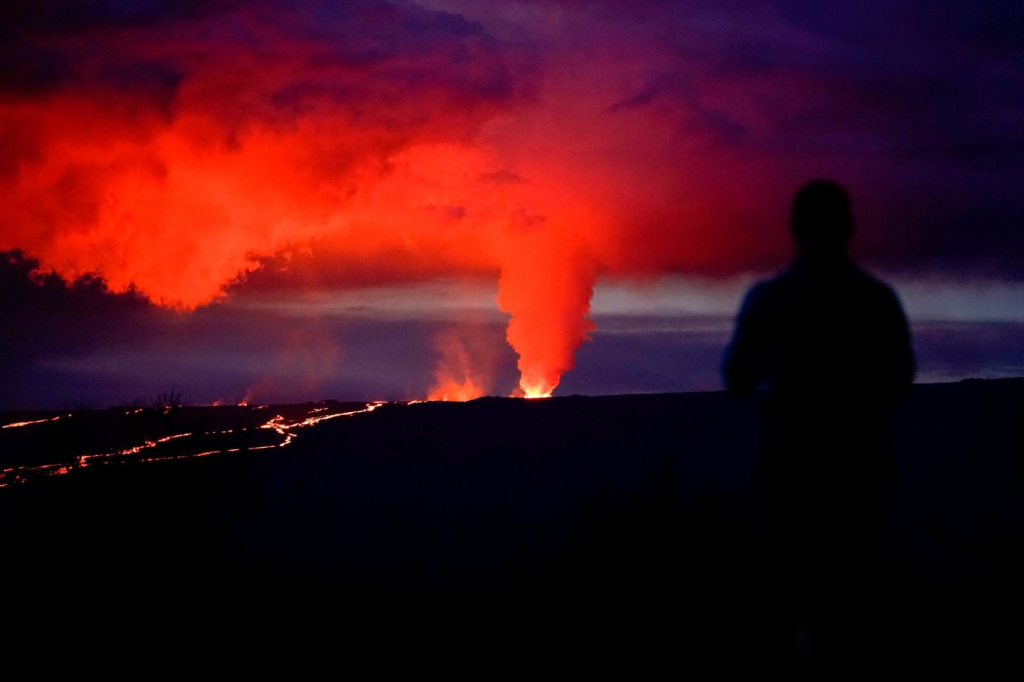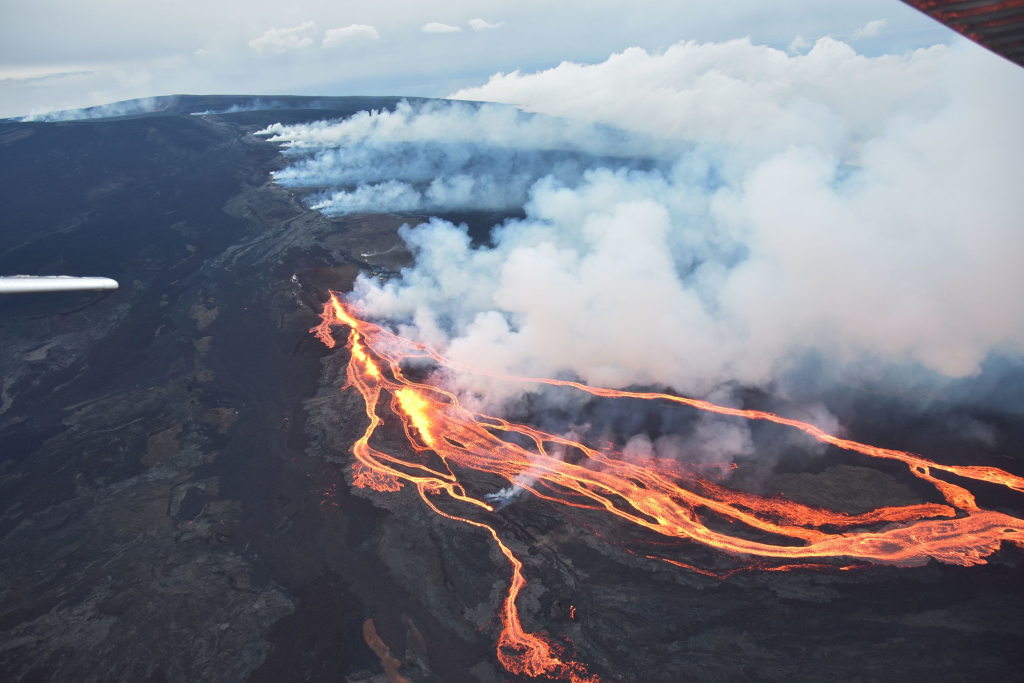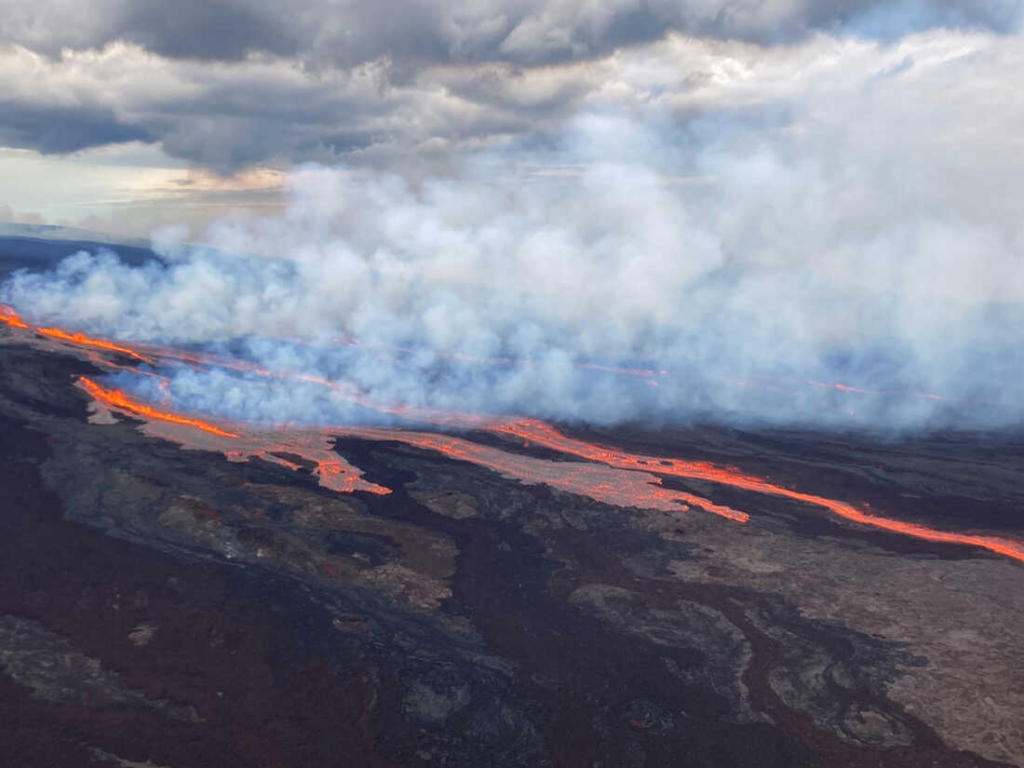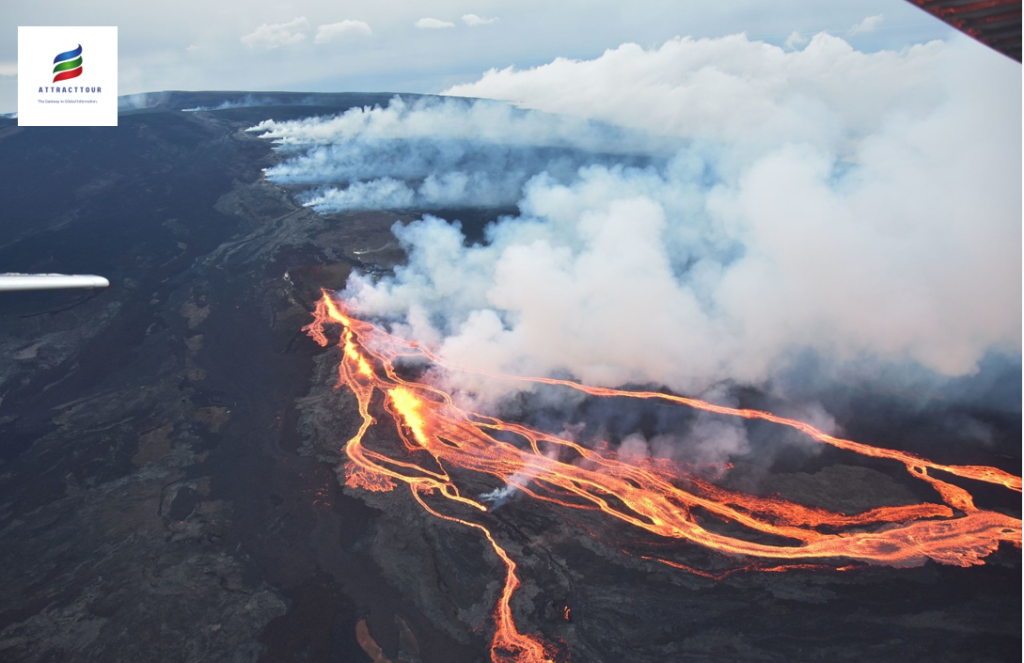On Wednesday, Mauna Loa, the world’s biggest active volcano, continued to erupt from its northeast rift on the Hawaiian island of Oahu. Multiple rivers of lava pour down the mountain’s north face, reaching the Daniel K. Inouye Highway (Saddle Road), an important road between Hilo and Kona.

Following a series of big earthquakes, the eruption began on Sunday night near its summit. It then expanded to vents that formed in a rift zone, where the mountain is breaking apart and magma can erupt more easily.
The Hawaiian Volcano Observatory’s scientist-in-charge, Ken Hon, believes no new vents will arise on the volcano’s south-west rift zone during this eruption. As a result, towns to the west will be spared from lava flows this time.

In 1984, Mauna Loa erupted from the northeast as well. Lava was heading toward Hilo at the moment, but it halted a few miles north of the town.
Because of a volcanic explosion in Hawaii, the world’s top measuring facility for global carbon dioxide levels has been shut off, and scientists are hurrying to re-establish the critical monitoring that has been located on the volcano since 1958.

Since Sunday night, lava has been shooting more than 150 feet into the air from Mauna Loa, the world’s largest active volcano, and a river of molten rock is now threatening not only the main highway on Hawaii’s big island, but also the Mauna Loa Observatory, a scientific station located on the volcano’s northern edge.
According to the National Oceanic and Atmospheric Administration (NOAA), which manages the facility, electricity cables to the observatory have been severed, and an access route to the site is currently impassable owing to lava flow from the volcano.
Measurement of global CO2 levels, which has been underway at Mauna Loa since 1958 and has emerged as a critical benchmark in the escalation of the climate problem, has been halted owing to the eruption, with the observatory’s eight-person scientific crew unable to access its sensors.





